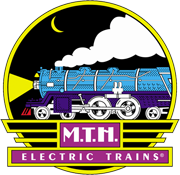Product Spotlight - 2019 Premier EP-2 Bipolar Electric with Proto-Sound 3.0

Chicago, Milwaukee, St. Paul, and Pacific. The Milwaukee Road’s full name described its route perfectly — from the Midwest to the Northwest with not much in between. After Chicago and the Twin Cities, passengers on the road’s Olympian saw virtually nothing but farms, ranches, and mountains for 1500 miles until they reached the Coast at Tacoma or Seattle. But in 1919, this sparsely traveled mountainous route seemed the ideal place for the General Electric Company and what was then called the Chicago Milwaukee and St. Paul Railway to prove a point: electric power was the Future of American Railroading. And the five EP-2 Bi-Polars were going to be the engines to do it.
Officially called Bi-Polar Gearless Types, they were vastly superior to the steam locomotives of their day. With 3,200 continuous horsepower, an EP-2 could pull 13 Pullmans up a 2.2% grade, an incredibly steep hill in real-life railroading. When the Bi-Polars were young, their owners and builders delighted in staging pulling contests such as a 1924 “Battle of the Giants,” in which a Bi-Polar easily won a tug-of-war against a pair of steam locomotives, a 2-8-0 and a 2-6-6-2.
Unfortunately, the source of the Bi-Polars’ advantages was also their chief drawback: that darn overhead wire, which was incredibly expensive to put up. The Milwaukee Road’s original plan was to electrify 870 miles of track from central Montana to Puget Sound. But a 1923 bankruptcy left the road without funds to string wire over the middle part of the route, and the Washington State and Montana/Idaho divisions were never joined. As a result, the Bi-Polars spent most of their lives on the 214-mile Coast Division, hauling passengers between the farming town of Othello and the ports of Tacoma and Seattle.
They soldiered on dependably for more than three decades, until the railroad decided to “modernize” them in the early 1950s. Unfamiliar with electric locomotives, shop crews in Milwaukee severely compromised the dependability of the engines, while making a modest attempt to streamline the Bi-Polars’ exteriors, mainly by rounding off the noses. The engines became so failure-prone that all five were retired by 1960; one survives today in the National Museum of Transport in St. Louis.
The Bi-Polar returns to the Premier Line in 2019 in its original, non-streamlined body style, upgraded with Proto-Sound 3.0. Recreate the Olympian of the 1920s with the as-delivered black paint scheme and a string of heavyweight cars, or the postwar Olympian Hiawatha with its signature Skytop observation and Super Dome full-length dome cars. Either way, you’ll get to watch one of the smoothest-running electrics in O gauge snake its way through curves, blow smoke from its train heat boiler, and start and stop so gently that you’ll never spill the water in the diner.
Did You Know?
The “Bi-Polar Gearless” designation referred to the fact that each of the EP-2’s twelve traction motors had only two poles. The motor armatures were mounted directly on each drive wheel axle, with the two field poles mounted on the chassis surrounding each axle. Simply put, the motor shaft and the drive wheel axle were one and the same. This made for an unusually quiet locomotive because there was no gear noise and very little motor whine, since motor speed was only 458 RPM at 60 miles per hour.
Product Features
Product Features:
- Intricately Detailed, Die-Cast Metal Body
- Die-Cast Truck Sides & Pilots
- Metal Chassis
- Metal Handrails and Horn
- (2) Handpainted Engineer Cab Figures
- Authentic Paint Scheme
- Metal Wheels, Axles and Gears
- (2) Remote-Controlled Proto-Couplers
- Prototypical Rule 17 Lighting
- Directionally Controlled Constant Voltage LED Headlights
- Lighted LED Cab Interior Light
- Illuminated LED Number Boards
- (2) Precision Flywheel-Equipped Motors
- Operating ProtoSmoke Diesel Exhaust
- Operating Pantographs
- Onboard DCC/DCS Decoder
- Locomotive Speed Control In Scale MPH Increments
- 1:48 Scale Proportions
- Proto-Sound 3.0 With The Digital Command System Featuring Passenger Station Proto-Effects
- Unit Measures: 20 x 2 1/2 x 4 5/8
- Operates On O-72 Curves Diesel DCC Features
- F0 Head/Tail light
- F1 Bell
- F2 Horn
- F3 Start-up/Shut-down
- F4 PFA
- F5 Lights (except head/tail)
- F6 Master Volume
- F7 Front Coupler
- F8 Rear Coupler
- F9 Forward Signal
- F10 Reverse Signal
- F11 Grade Crossing
- F12 Panto Auto/Manual
- F13 Front Panto Up/Down
- F14 Rear Panto Up/Down
- F15 Idle Sequence 2
- F16 Idle Sequence 1
- F17 Extended Start-up
- F18 Extended Shut-down
- F19 Smoke On/Off
- F20 Smoke Volume
- F21 One Shot Doppler
- F22 Coupler Slack
- F23 Coupler Close
- F24 Single Horn Blast
- F25 Engine Sounds
- F26 Brake Sounds
- F27 Cab Chatter
- F28 Feature Reset








